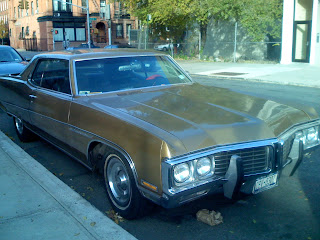 TYHIVN’s recurring Valet Lit feature has covered some of the greatest valet parking moments in English language fiction. This coverage, however, has historically neglected the non-fiction parking canon.
TYHIVN’s recurring Valet Lit feature has covered some of the greatest valet parking moments in English language fiction. This coverage, however, has historically neglected the non-fiction parking canon.Wait, non-fiction parking literature? What else is there besides the junk that gets stuck under windshield wipers? Fines, hastily-scribbled apologies following a fender-bender, advertisements – all traditionally the stuff of frowns. Parking Today magazine is an exquisite departure. As the premiere publication of the $15 billion parking industry, PT covers all aspects of the parking world – from mechanical arms to revenue streams, street cleaning to the price of oil.
John Van Horn is the founder, editor, and publisher of Parking Today. TYHIVN recently had the pleasure of engaging in a brief email interview with Mr. Van Horn. Under discussion: the myth of the parking crisis, the evolution of parking technology, and the best valet parking moments in recent film history.
TYHIVN: Can you tell me a little about your background?
 JVH: I founded Parking Today 12 years ago. Prior to that I sold parking revenue equipment (gates, fee computers, et cetera) for almost 20 years. I was in the army during Vietnam, and took over and ran my father’s newspaper after I returned home.
JVH: I founded Parking Today 12 years ago. Prior to that I sold parking revenue equipment (gates, fee computers, et cetera) for almost 20 years. I was in the army during Vietnam, and took over and ran my father’s newspaper after I returned home.TYHIVN: Please trace the history of Parking Today for me.
JVH: Founded in 1996, our primary audience is anyone who has anything to do with parking. We have a circulation of about 15,000.
TYHIVN: How has the parking industry evolved over time? Can you discuss some of the more notable technological changes that the parking industry has undergone?
JVH: The use of automated fee collection rather than cashiers at the gate, the use of credit cards, pay by cell phone, and pay and display/space equipment for on-street collection.

TYHIVN: Is the parking industry hurting as people drive less due to exorbitant gas prices? What’s the future of parking as you see it? Will people always own individual vehicles that will need to be parked?
JVH: I think the freedom afforded by automobiles will ensure that there is a steady supply. Of course, simple market forces will lower the dependence on private vehicles, but as in New York, the reduction in the number of cars hasn’t affected the parking business at all. The prices just go up.
TYHIVN: Is there a "parking crisis" in American cities?
JVH: Nope. I have never found a garage that was “full.” It’s a case of “free” parking not being available. I can go on for hours about this.
TYHIVN: If you could design a parking solution or parking mechanism from the ground up, what would it l
 ook like? What's your dream parking lot?
ook like? What's your dream parking lot?JVH: Probably an automated system where you drive in, get out of your car, and it’s whisked away. When you return it is brought to you. These exist, but mostly in very crowded countries, such as Japan and Germany.
TYHIVN: Crime in parking lots continues to be a major problem in the United States.
JVH: Is it? Can you give me some numbers? Certainly crime happens in parking garages, but is it more than in other places? Garages are being made safer all the time by better design, lighting, CCTV, and patrols.
TYHIVN: A few years ago Lexus introduced a vehicle that was capable of parallel parking itself. Why haven't we seen more of this technology? Was it a flop?
JVH: Probably not. But frankly, it's just another toy.
TYHIVN: As a former valet, I took exception to an article from the May 2008 issue of PT entitled "Is Your Valet Service Driving Guests Away?": my sub-par service at a luxury restaurant venue never seemed to deter customers. What are the major issues surrounding the valet parking industry today? What are the conditions under which a venue is most likely to have valet?

JVH: Virtually anywhere the level of service is needed – hospitals, airports, hotels, office buildings. I have even seen valets at universities. Often a shortage of parking makes valet necessary. On-street valet services have become popular in many shopping areas. The major challenge is the fact that when you park your own car, it’s your responsibility, but when you valet a car, it becomes the responsibility of the valet company. Many of the valet operations are “Pick-up” deals and the drivers work only for tips. These are illegal, but exist. Legitimate companies often find it difficult to compete.
TYHIVN: Do you have any personal favorite parking moments in television, film, or literature?
JVH: There's the parking garage in I, Robot. Or the look on the valet’s face near the end of Get Smart, when the airplane drives by …

















































